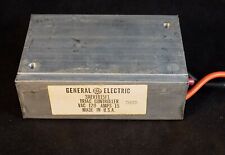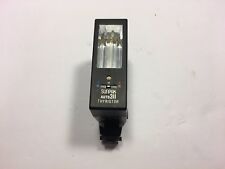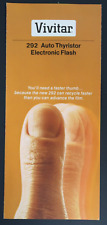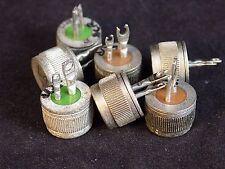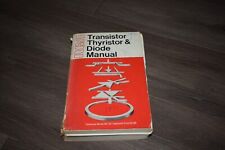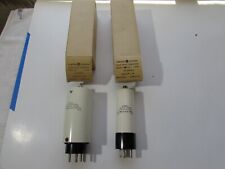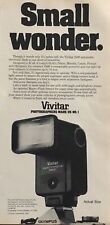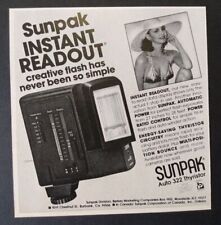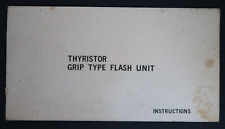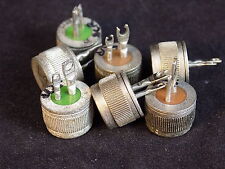MAC Address:
The Media Access Control address is a hard-coded or physical address present on anything that accesses the Internet. Your wireless router has one, your UMA capable handset has one, the backbone router your ISP uses probably has many, etc. It consists of a 48-byte address in the format nn:nn:nn:nn:nn:nn using the hexadecimal number system.
MAC Filtering:
A way to allow or deny certain devices from connecting to a wireless router based on the MAC address of that device. For example, if I only want my laptop to be able to connect to my wireless router I would set my router configuration to allow the MAC address of my laptop but deny all others.
QoS:
Quality of Service is a method of placing priority on certain types of packets, a certain network service, or even a certain device. This is very important when it comes to making calls over an Internet connection since you *need* the voice packets to go out first over data packets (i.e., someone surfing the ‘net, downloading a file, etc.). With no QoS if you are chatting over your UMA handset and someone starts a download the voice quality of your call may suddenly go from great to horrible and finally your call may just drop.
Category-5 or cat-5:
A term used to describe the standard 8-wire Internet cable used in many places today. Your computer (non-wireless) is using a cat-5 cable to plug into your router. The cable modem is using a cat-5 cable to plug into your router, etc.
802.11
The first wireless LAN specification developed by the IEEE. The 802.11 specification defines three types of wireless LAN, all operating at a data transmission rate of 1Mbps or 2Mbps. 802.11 FHSS and 802.11 DSSS use radio frequency radiation as the transmission medium. The third 802.11 specification is based on diffuse infra-red transmission.
802.11a
Operates in the UNII (Unlicensed National Information Infrastructure) 5GHz band and supports transmission rates up to 54Mbps. 802.11a uses Orthogonal Frequency Division Multiplexing (OFDM), as opposed to the DSSS or FHSS schemes used in 802.11b and 802.11 networks. Due to its higher frequency of operation, the range of 802.11a equipment is less that of lower frequency systems such as 802.11b and 802.11g. This can increase the cost of an 802.11a network, because a greater number of access points may be required. Since it operates in a different RF band, 802.11a cannot work directly with 802.11b or 802.11g equipment. Using multi-mode 802.11a/b/g access points and/or client adapters will resolve this problem.
802.11b
Currently the most popular and widespread standard for wireless LANs, which operates in the 2.4GHz ISM band and supports data rates up to 11Mbps. Also known as 802.11 High-Rate (HR) and as Wi-Fi, 802.11b uses the DSSS spread spectrum transmission scheme, and operates at data rates of 1Mbps, 2Mbps, 5.5Mbps and 11Mbps.
802.11g
The latest in the 802.11 wireless LAN series, 802.11g operates in the 2.4GHz ISM band and uses Orthogonal Frequency Division Multiplexing (OFDM) to support data rates up to 54Mbps. 802.11g equipment, also known as 54g\u2122, 802.11g can also fall back to 802.11b operation. Therefore an 802.11b device can work directly with an 802.11g device using 802.11b mode.
802.11i
The new IEEE standard for security in 802.11 WLANs. 802.11i supersedes the WEP scheme originally introduced with 802.11b wireless LANs. Devices that fully support 802.11i can use WEP, Wi-Fi Protected Access (WPA) or AES for data encryption.
802.1x
802.1x is a scheme for port-based security, which requires a user or device to authenticate with the wireless access point or a wired LAN switch/hub, before it can communicate with other devices in the network. 802.1x is used in conjunction with the Extensible Authentication Protocol (EAP).
802.3
Most wired networks conform to the 802.3 specification for CSMA/CD based Ethernet networks.
802.x
Refers to the IEEE 802.xx series of specifications for wired and wireless LANs.
Access Point (AP)
A network device that serves as a communications “hub” for wireless clients. The AP typically provides communications to a wired network. An AP establishes one or more Basic Service Sets in its area of radio coverage. WLAN clients that know the name of the BSS (its SSID) can try to authenticate and associate with the AP.
Ad-Hoc Mode
A wireless LAN client mode that operates an independent, peer-to-peer configuration with other Ad-Hoc clients. The to alternative to Ad-Hoc mode is Infrastructure Mode, which requires an 802.11 access point.
AES (Advanced Encryption Standard)
A recent encryption standard based on the Rijndael algorithm, AES has been approved by the US National Institute of Standards and Technology (NIST) for the Federal Information Processing Standard (FIPS-197). AES is a symmetric encryption algorithm that will be used by U.S. Government organisations and many other organisations in the future, to protect the transmission of sensitive information. AES is being incorporated into the IEEE 802.11i standard for 802.11 WLAN security.
Association
The process of “connecting” to an access point, which provides a WLAN client access to the wireless and wired networks of an access point. A WLAN client must also successfully authenticate via the access point before it can access the network(s).
Authentication
The process of identifying a person or a device prior to allowing communication or conferring access rights to network resources. Authentication should ensure that an individual is who they claim to be.
Bridge
A Layer 2 device which transfers data frames from one Local Area Network to another, typically across a wide area communications link. Wireless bridges allow Local Area Networks in remote buildings to be networked via relatively high speed point-to-point or point-to-multipoint line-of-sight wireless links, often at relatively low cost.
BSS (Basic Service Set) An area of coverage, or “cell”, established by an 802.11 wireless access point. 802.11 WLAN clients within range of the access point can associate with it, provided they know the SSID for the BSS and can authenticate successfully with the access point.
BSSID (Basic Service Set Identity)
The MAC address of an access point that has set up a Basic Service Set (BSS).
CSMA/CA (Carrier Sense Multiple Access/Collision Avoidance)
CSMA/CA is the basis of the medium access control (MAC) scheme employed in IEEE 802.11 wireless LANs. It is a”listen before talk” (Carrier Sense) method of minimising collisions caused by simultaneous transmissions from multiple radio devices. If a packet is successfully sent and received, the receiving device returns an acknowledgement packet (ACK) to the sender..
dBi
dBi -Decibels relative to an Isotropic antenna – is a measure of an antenna’s gain.
dBm
dBm -Decibels relative to one milli-Watt – is a measure of power output.
Decibel (dB)
A logarithmic measure of signal gain or loss relative to the original source. Gain is represented by a positive dB value, loss by a negative value.
DSSS
Direct Sequence Spread Spectrum. The data transmission scheme (sometimes referred to as a “modulation” scheme) used in 802.11b WLANs. DSSS uses a radio transmitter operating at a fixed centre frequency, but using a relatively broad range of frequencies, to spread data transmissions over a fixed range of the frequency band. 802.11a and 802.11g (when not operating in 802.11b mode) use Orthogonal Frequency Division Multiplexing (OFDM).
EAP (Extensible Authentication Protocol)
EAP is the generic terms for a family of authentication protocols that can be employed in wireless LANs for identifying users and verifying the authenticity of the network(s) they connect to. Mutual authentication is just one of many essential requirements for secure wireless networking. EAP comes in several forms, each having different strengths and weaknesses: EAP-MD5, LEAP (EAP – Cisco Wireless), EAP-TLS, EAP-TTLS and PEAP (Protected EAP).
FHSS
Frequency-Hopping Spread-Spectrum (FHSS) is a spread-spectrum technique used by Bluetooth devices and some 802.11 1Mbps / 2Mbps WLANs. With FHSS, data is transmitted on a radio carrier which hops pseudo-randomly across several different frequencies at a pre-determined rate and hopping sequence. 802.11b devices use DSSS rather than FHSS. 802.11a and 802.11g devices use OFDM.
Fragmentation
A technique employed in wireless LANs to break larger network packets into smaller units, for transmission over the wireless network. Fragmentation can reduce both the probabilty and the adverse effects of wireless packet corruption, and thereby improve overall wireless network performance. The 802.11 fragmentation threshold must be set correctly by the wireless LAN administrator.
Fresnel Zone
The area around the visual line-of-sight between a radio transmitter and receiver. Since radio waves disperse as they move away from a transmitter, obstructions in the Fresnel zone, such as buildings and trees, will attenuate or reflect the signal, such that the intended receiver may not collect an adequate radio signal for reliable communication.
Hidden Node
A wireless device that is intended to operate in a cell or area of coverage, but which cannot hear the wireless transmissions of some other nodes, and so intermittently causes interference with them. Hidden nodes degrade the performance of a wireless network, and so need to be identified and corrected by the wireless LAN administrator.
Hz (Hertz)
The unit for measuring frequency in terms of the number of radio waves or cycles per second. One Megahertz (MHz) is one million hertz. One Gigahertz (GHz) is one billion Hertz. 802.11b and 802.11g wireless LANs, for example, operate at in the 2.4 GHz band.
HiperLAN
A wireless LAN standard developed by the European Telecommunications Standards Institute (ETSI). HiperLAN/1 supports data-rates of up to 20 Mbps, whereas HiperLAN/2 supports rates up to 54 Mbps. Both operate in the 5GHz RF band, and HiperLAN 2 will provide Quality of Service elements that are missing in standard 802.11 series wireless networks. ETSI and the IEEEE are working on a the 5GHz Unified Protocol – 5UP – a standard which will unite IEEE 802.11a and HiperLAN.
HomeRF
A specification for wireless digital communication between PCs and consumer electronic devices, designed primarily for use within the home environment. Based on frequency hopping (FHSS) in the 2.4GHz ISM band and using the SWAP protocol, HomeRF has several benefits including the ability to carry voice and data over a range of up to 150 feet. The HomeRF group disbanded in January 2006 following widespread consumer adoption of wireless LAN equipment based on the IEEE 802.11b standard, with which HomeRF is incompatible.
IBSS (Independent Basic Service Set)
A BSS set up by an 802.11 WLAN station operating in an Ad-Hoc Mode wireless network.
IEEE
Institute of Electrical and Electronics Engineers. A US-based membership organisation that includes engineers, scientists, and students in electronics and related fields. The IEEE developed the 802 series wired and wireless LAN standards. Visit the IEEE at IEEE – the world’s leading professional association for the advancement of technology.
Infrastructure Mode
A wireless LAN client mode that requires an access point (AP). Infrastructure Mode is the alternative to Ad-Hoc Mode. Clients operating in Infrastructure Mode pass data through a central access point. The access point manages wireless network traffic in the cell or area of coverage that it sets up (the BSS), and typically allows clients to communicate to and from a wired network.
ISM band
A range of radio frequencies that are assigned for use by unlicensed users of Industrial, Scientific and Medical equipment, but which is also used by many other wireless devices, including 802.11, 802.11b and 802.11g devices, by Bluetooth and by microwave ovens. The Internationally-recognised ISM band sits within the 2.4GHz – 2.5GHz frequency range. In the US, two further ISM bands exist, in the 902MHz – 928MHz range and the 5.725GHz – 5.875GHz range.
LAN (Local Area Network)
A communications network that serves users within a local geographical area, typically over distances of around 100m. Wireless LANs use wireless communications to network devices so there is no need for data cabling.
Medium Access Control (MAC)
In most wired and wireless networks, a method is used to control how and when a device can transmit data over the communications link. This is the network\u2019s Medium Access Control scheme. The MAC protocol operates within the Data Link layer (Layer 2) of the ISO OSI 7 layer Model. The IEEE 802.11 standard, for example, specifies the MAC protocol for sharing of the wireless medium, packet formats, addressing, error detection and recovery following errors.
Multipath fading
An undesirable radio condition caused by RF signals taking different paths from the transmitter to the receiver and subsequently interfering with each other.
OFDM (Orthogonal Frequency Division Multiplexing)
OFDM employs multiple overlapping radio frequency carriers, each operating at a carefully chosen frequency that is Orthogonal to the others, to produce a transmission scheme that supports higher bit rates due to parallel channel operation. OFDM is an alternative transmission scheme to DSSS and FHSS.
Peer-to-peer
A network model in which each computer or application communicates and shares data directly with others shares on an equal basis. The term also describes the Ad-Hoc mode that can be used in 802.11 wireless LANs.
Protocol
A generic term for set of rules for communication, which also normally define the data packet formats and addressing scheme used. Protocols exist at each of the layers within the ISO OSI 7 layer reference model.
Radio frequency (RF)
A generic term for radio-based technologies, operating between the Low Frequency range (30k Hz) and the Extra High Frequency range (300 GHz).
Repeater
A device used to extend cabling distances, or the range of a wireless device, by regenerating signals. Signal regeneration typically involves receiving, re-shaping, re-timing and re-transmitting the signal.
Roaming
The ability to move seamlessly from one RF cell or coverage area to another without losing higher layer network connectivity. Roaming in 802.11 wireless networks is not straightforward. For seamless roaming in multi-vendor networks, an Inter-Access Point Protocol (IAPP) is required, and there is no standard available at present. Where layer 2 encryption gateways or layer 3 VPNs are used, data can be lost during handover between access points. Finally, roaming between 802.11 hotspots and mobile networks, such as GPRS and UMTS, is an area where only proprietary software solutions exist at present.
RTS/CTS
RTS/CTS (Request to Send / Clear to Send) is a handshake protocol that can be used in 802.11 wireless networks as a means to identify and temporarily resolve the hidden node problem. The RTS/CTS threshold must be set correctly by the wireless LAN administrator.
Security
Security is one of the biggest concerns for those planning or implementing wireless LANs. WEP has been proven to be insufficiently secure for most organisations, and so new schemes have been devised, including 802.1x/EAP, 802.11i,Cisco LEAP, WPA, EAP-TLS, EAP-TTLS, PEAP, layered VPN, Layer 2 encryption gateways, enterprise wireless gateways and more. Each has its own merits but in most cases, no one scheme on its own meets all of the security requirements of an organisation.
SNMP (Simple Network Management Protocol)
A client-server type protocol that allows a networked device or”agent” to be managed by a network management station. SNMP allows a management station to retrieve Management Information Base (MIB) information from agents. SNMP operates over UDP/IP (but can operate directly over Ethernet). SNMP version 3 is the only really secure version of SNMP – v1 and v2 are regarded as insecure.
SSID (Service Set Identity)
Also known as the “wireless network name”, the SSID is a 32 character, case sensitive name given to a Basic Service Set established by an access point. An access point can have more than one SSID. The SSID distiguishes one wireless network from another. WLAN clients and other devices looking to join a BSS must first supply the correct SSID. Contrary to many views, the SSID does not provide any effective security, since it can be sniffed from a wireless network by using a variety of PC-based software programs.
UNII (Unlicensed National Information Infrastructure)
A set of radio frequencies that are assigned for use by unlicensed users of wireless communications equipment, including 802.11a wireless LANs and HiperLAN. The Internationally-recognised UNII band is actually divided into three frequency ranges: 5.15GHz – 5.25GHz, 5.25GHz – 5.35GHz, and 5.725GHz – 5.825GHz.
WEP (Wired Equivalent Privacy)
WEP is a mechanism for authenticating WLAN clients and for and data encryption in 802.11 wireless LANs. WEP requires between one and four “keys” to be defined. Each WLAN client and access point must have a WEP key in common before data can be encrypted and exchanged between them. WEP has a number of well-documented flaws that make it suitable only for use in wireless LANs that are lightly-used and which do not carry sensitive information. WEP is not an end-to-end encryption mechanism – it only encrypts data whilst it is being transmitted over the air.
Wi-Fi
Wireless Fidelity – a term defined and Trademarked by the Wi-Fi Alliance (formerly known as the Wireless Ethernet Compatibility Alliance – WECA). Wireless LAN equipment carrying the Wi-Fi logo have been interoperability tested for compatibility with one (or more) 802.11 standards, and certified by the Wi-Fi Alliance to be sold under the Wi-Fi brand.
Wi-Fi 5
The Wi-Fi Alliance standard for wireless LAN products conforming to the 802.11a specification and tested for compatibility.
Wireless
Describes any device that can communicate without a wired connection. Example transmission techniques include Radio Frequency (RF), Infra-red (e.g. IrDA) and optical (e.g. laser).
Wireless Gateway
Enterprise Wireless Gateways (EWG) can be employed in wireless networks to provide security and traffic control via a variety of means, including network segmentation; authentication of users and devices; Role Based Access Control (RBAC) according to location, time and date; encryption of data; control of target systems and applications; bandwidth management; and traffic shaping.
Workgroup Bridge (WBG)
A device which allows one wired network to be bridged wirelessly to another via an access point, i.e. without the need for a wireless bridge.
WPA (Wi-Fi Protected Access)
The new authentication and encryption scheme introduced during 2006 by the Wi-Fi Alliance, WPA employs techniques developed by Cisco and others, namely TKIP and MIC, to generate unique and dynamic keys for WEP’s RC4-based encrypion. WPA is regarded as being sufficiently secure for organisations that do not tranfer very sensitive information over their wireless LANs.
- Thanks to rivviepop and @ BlackBerry Forums

